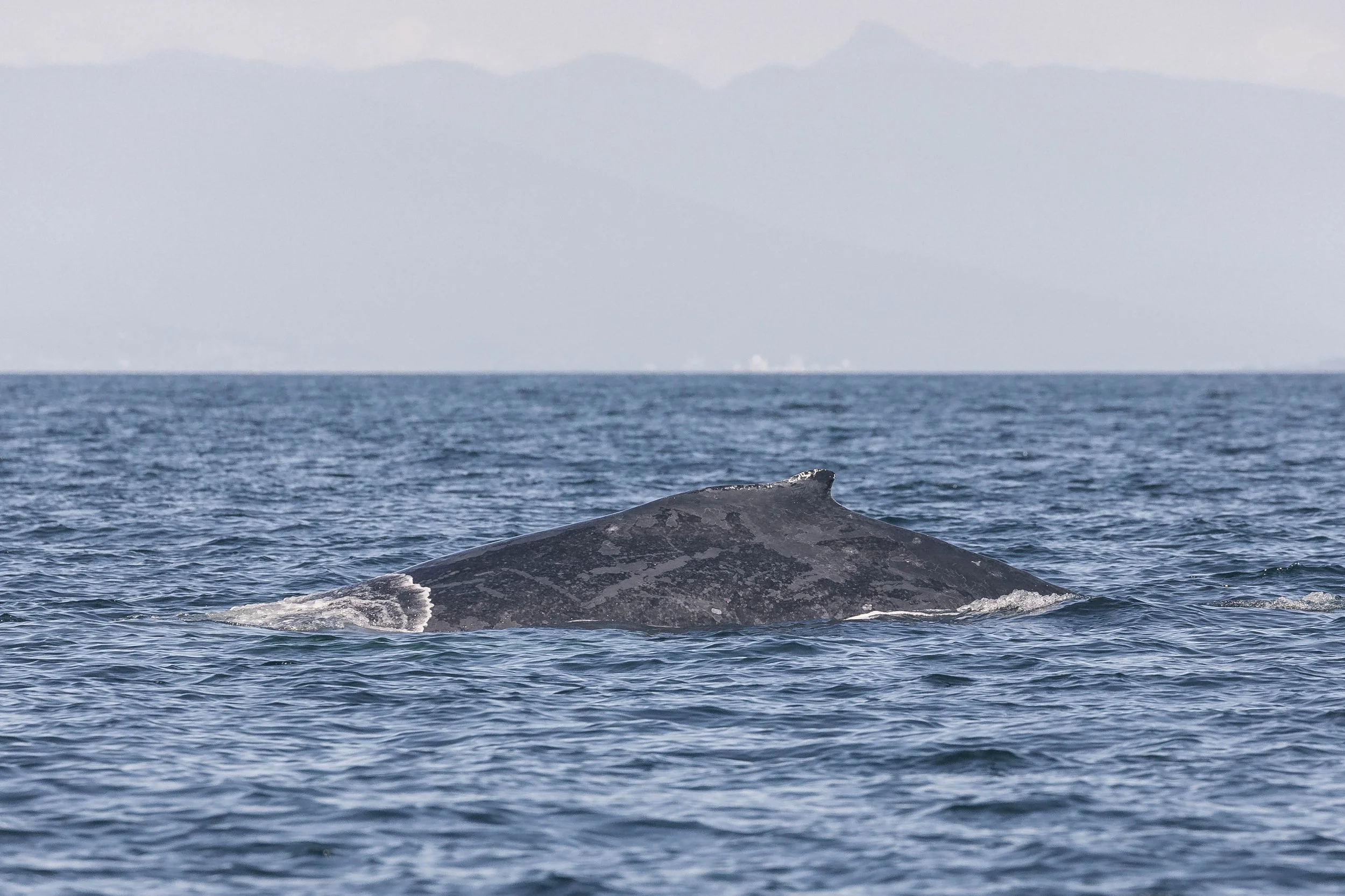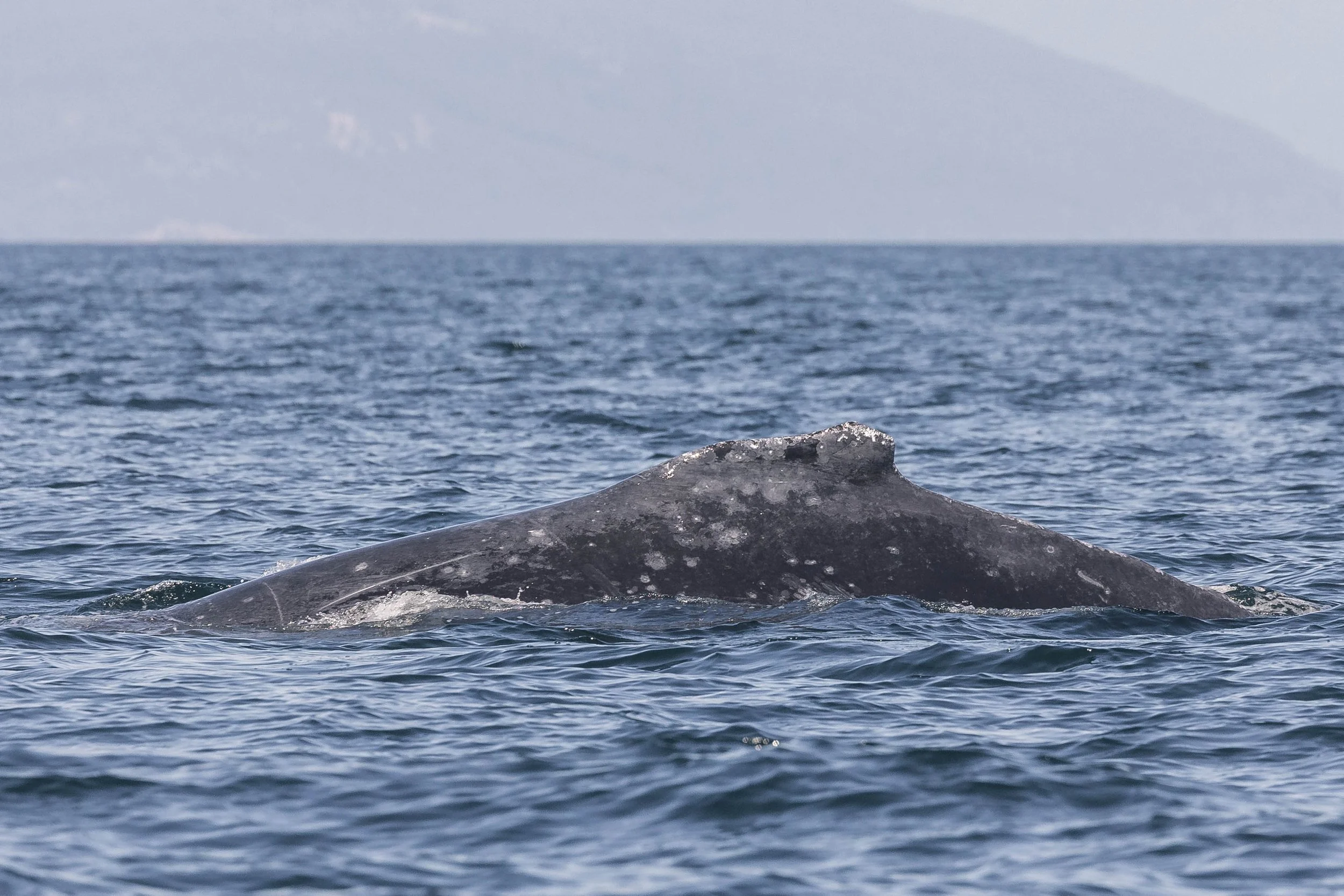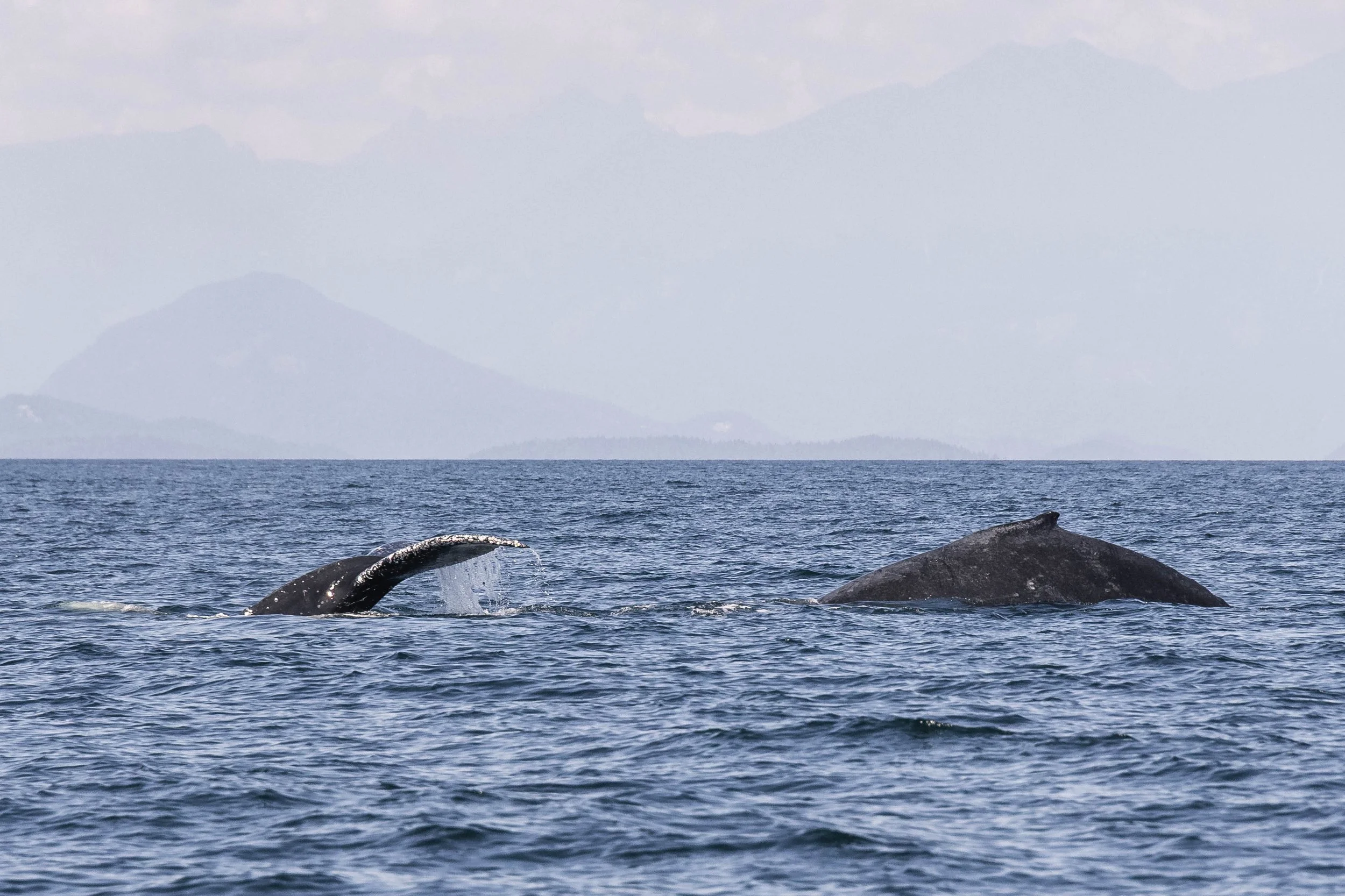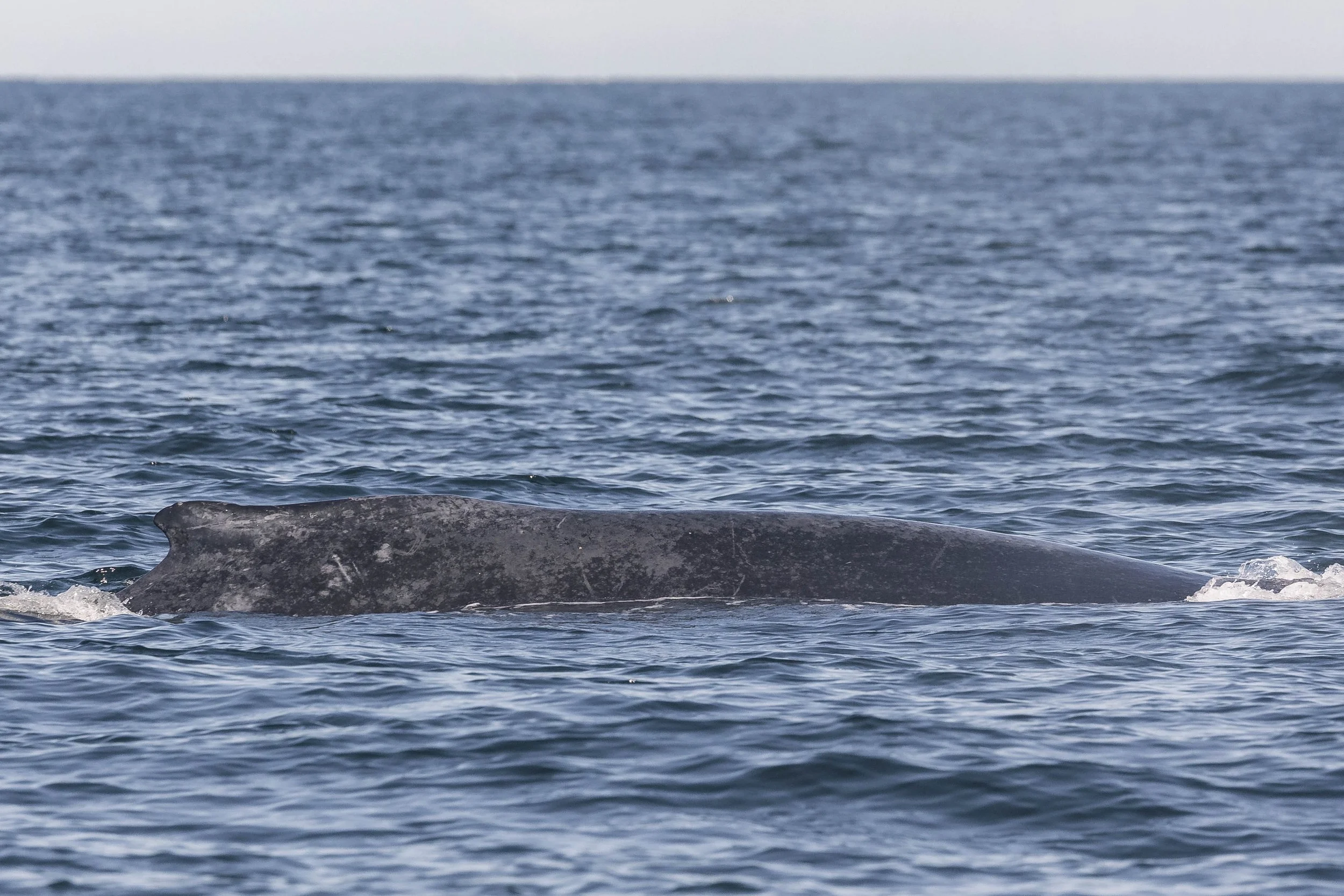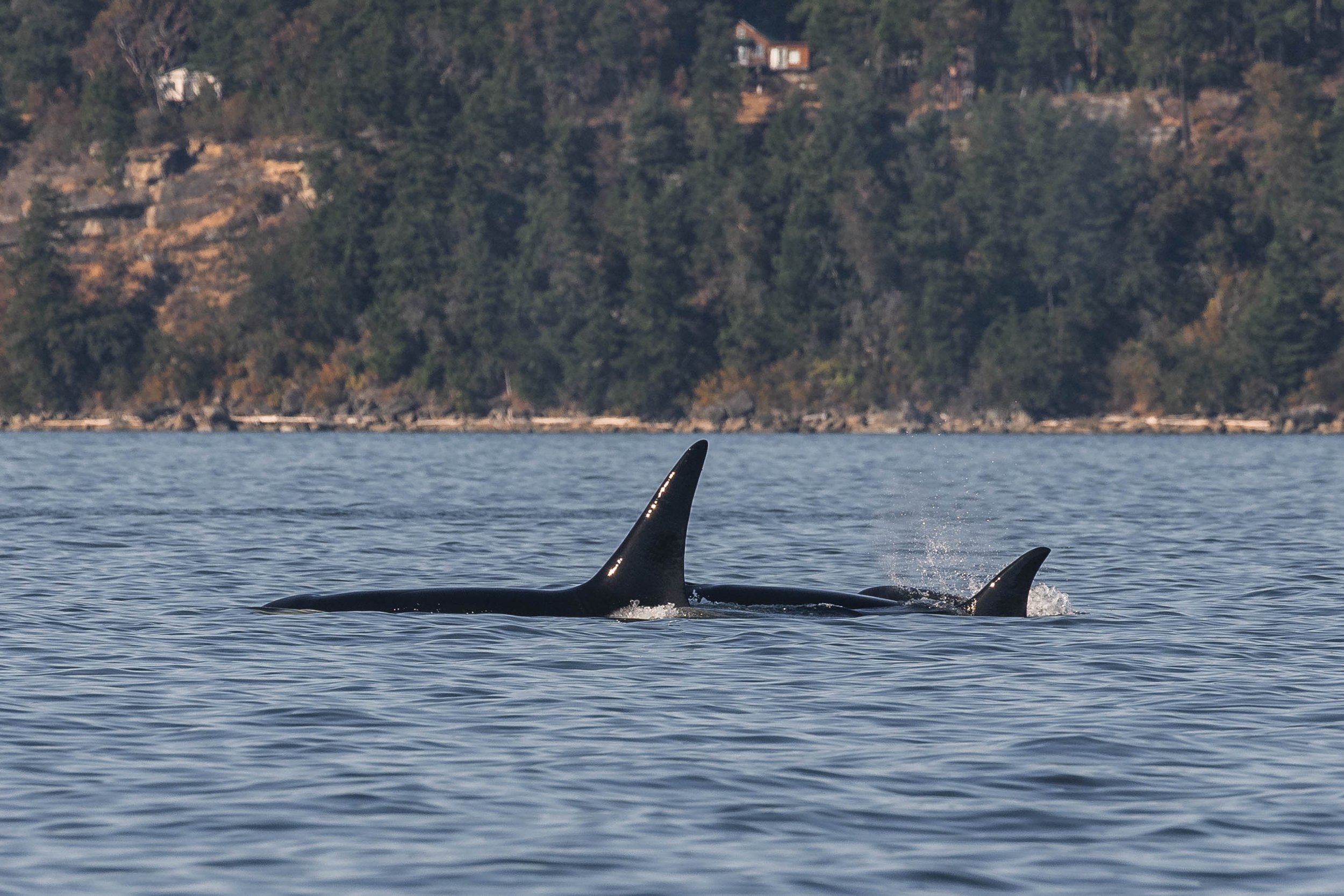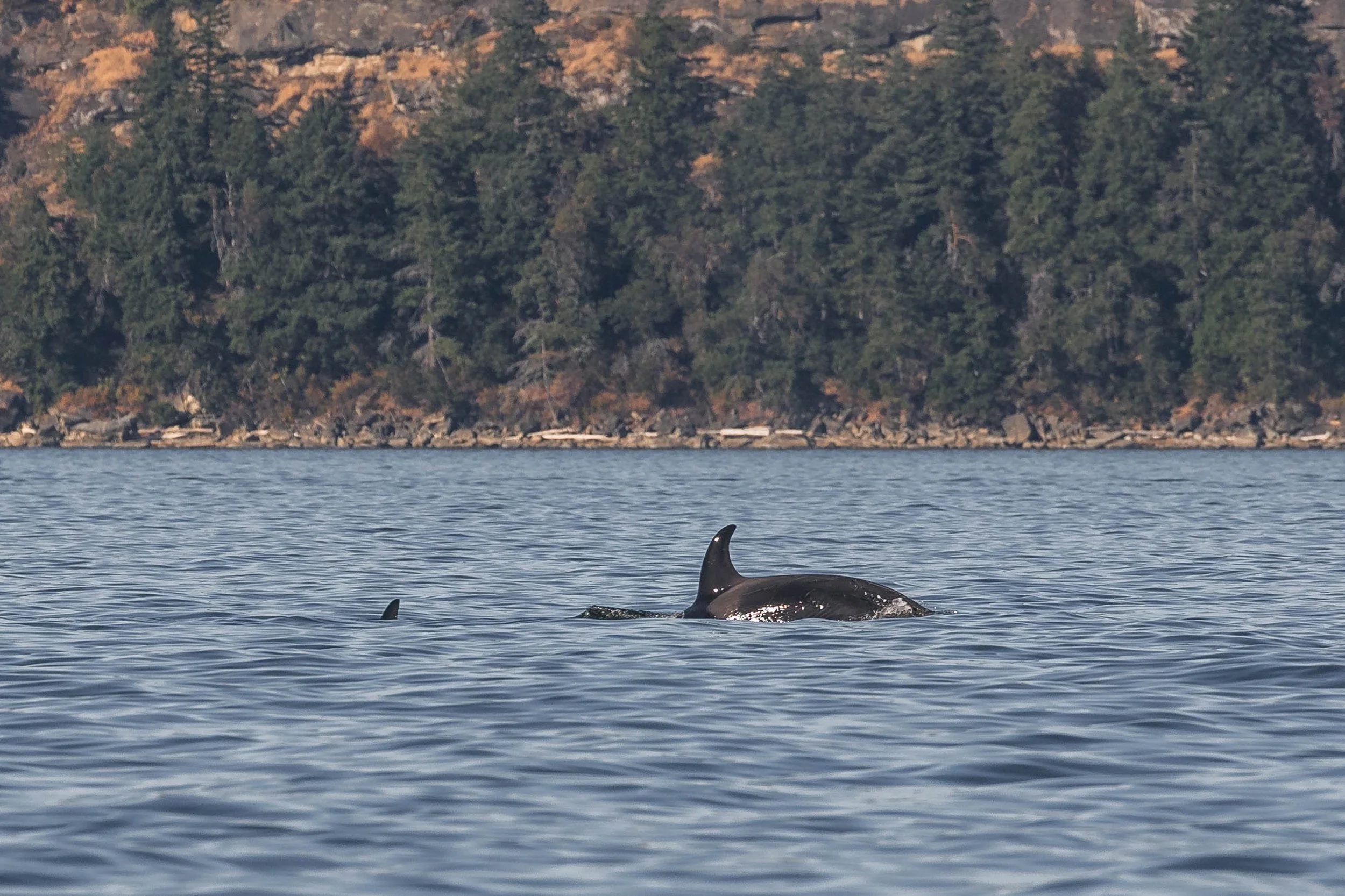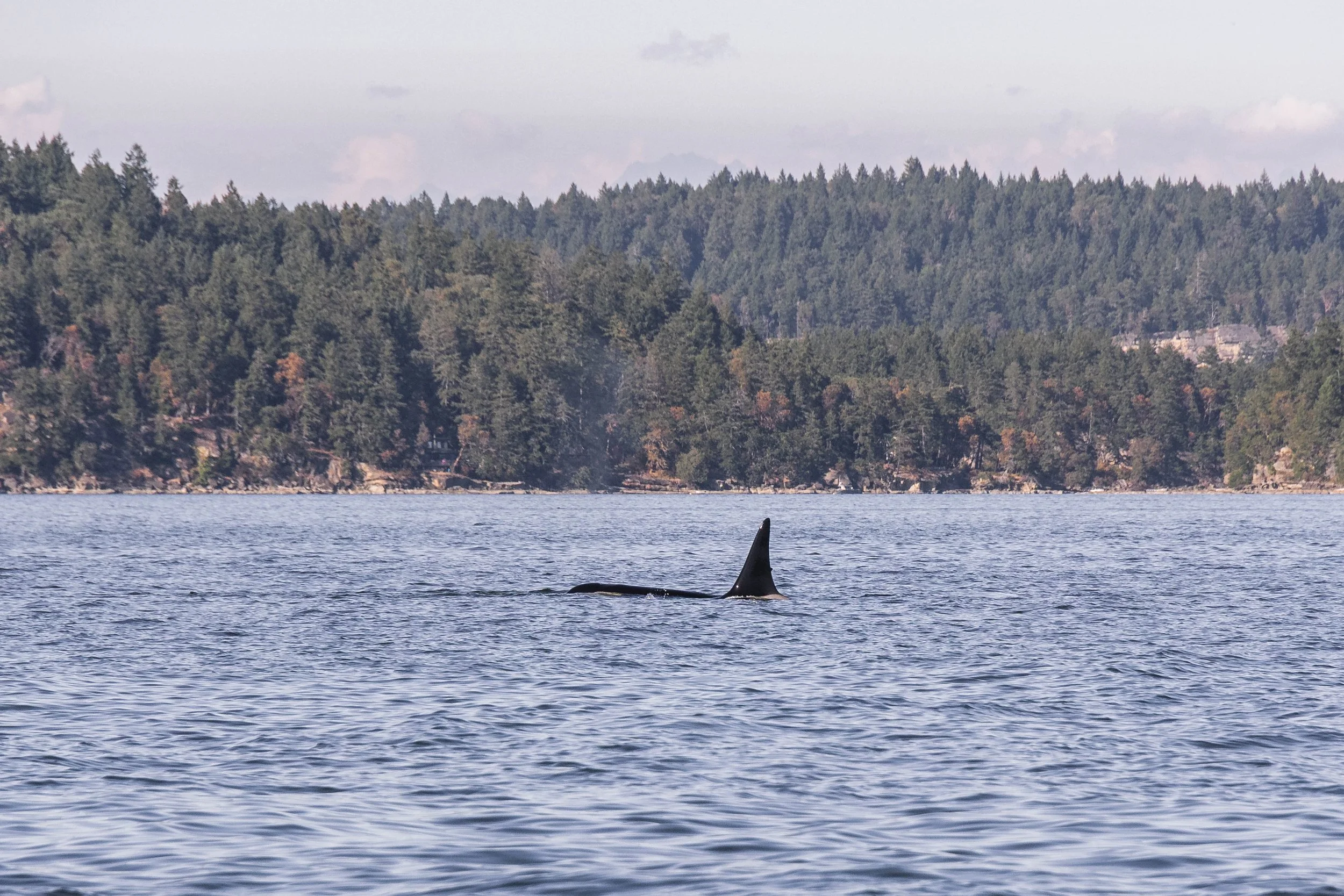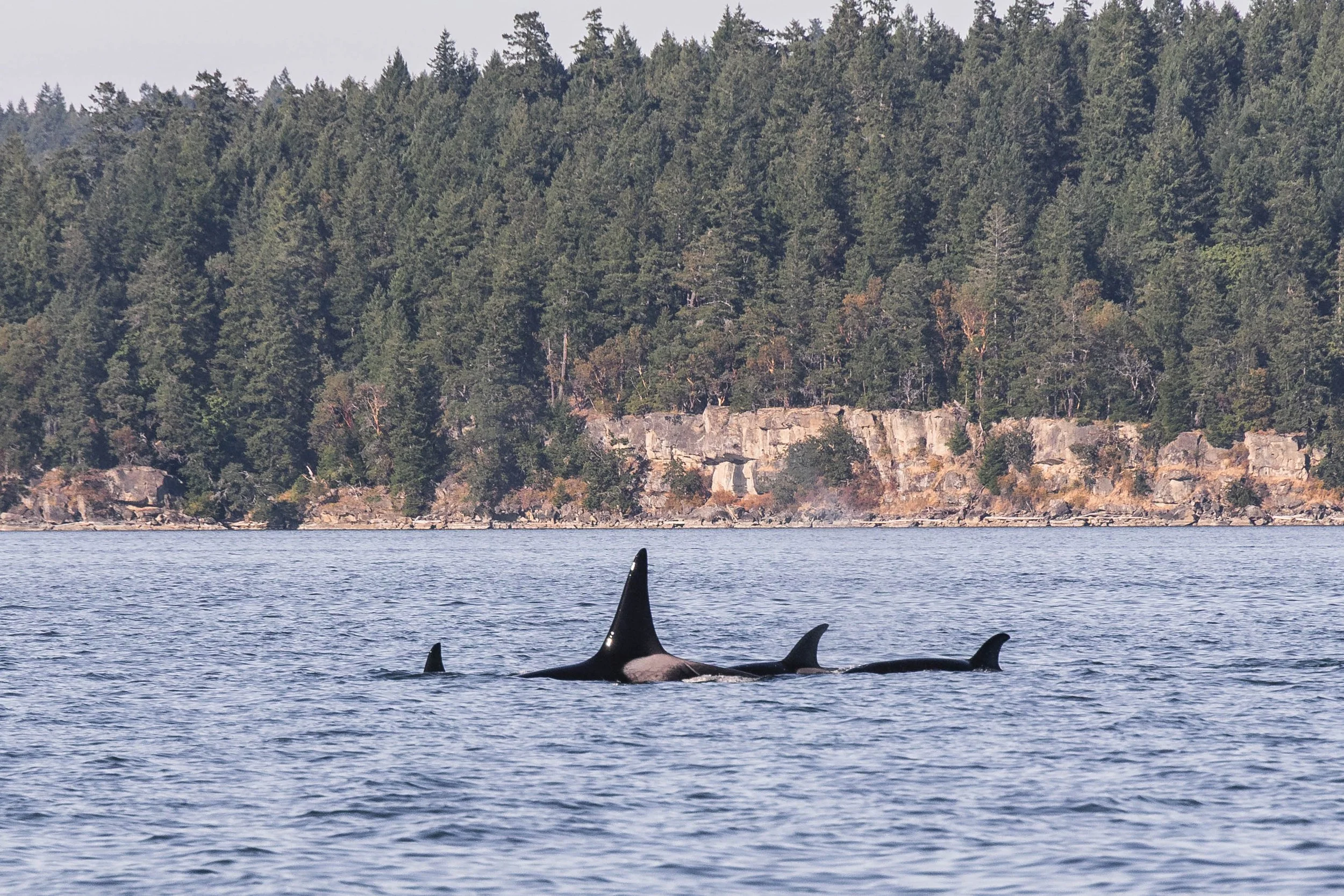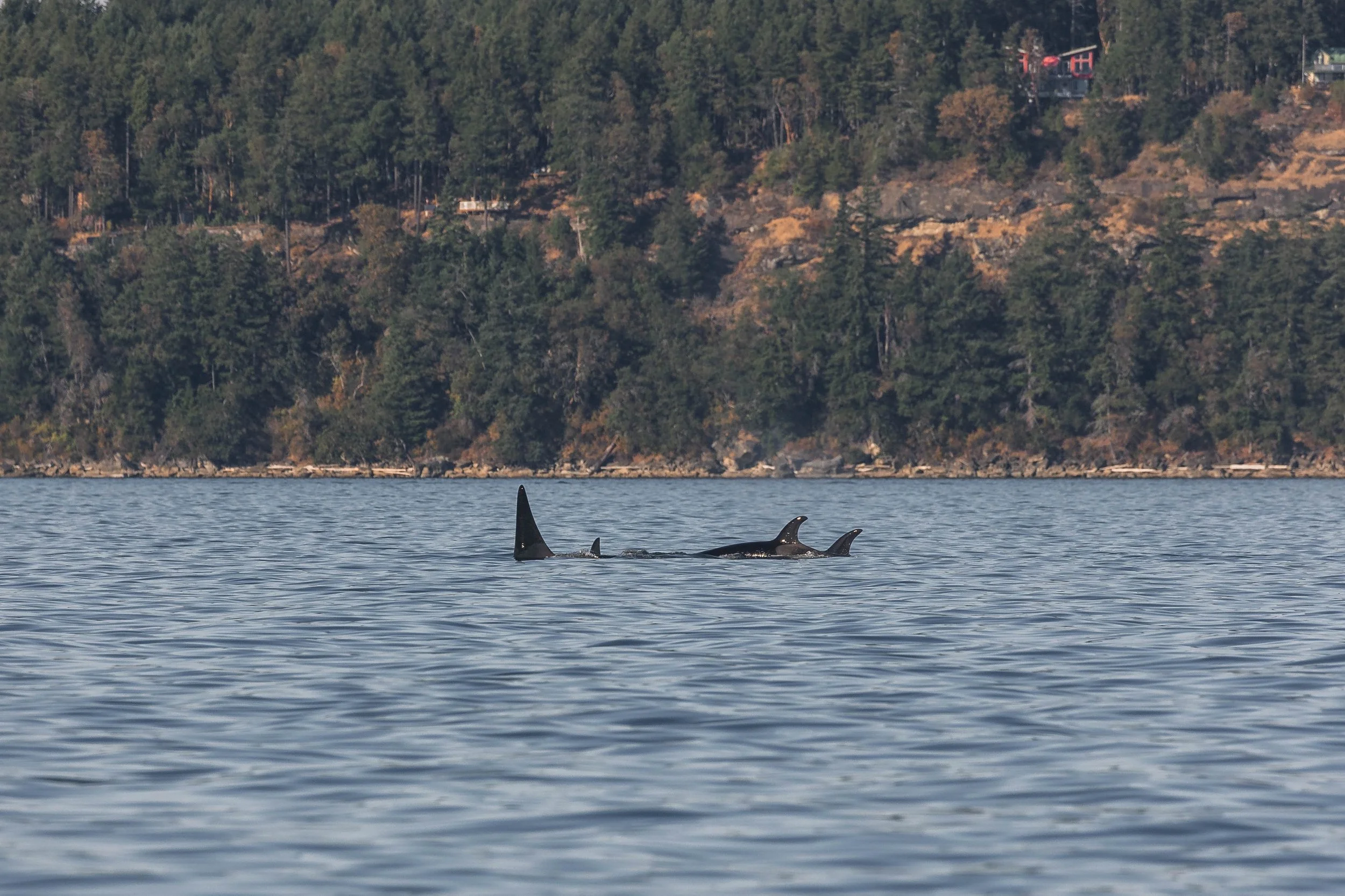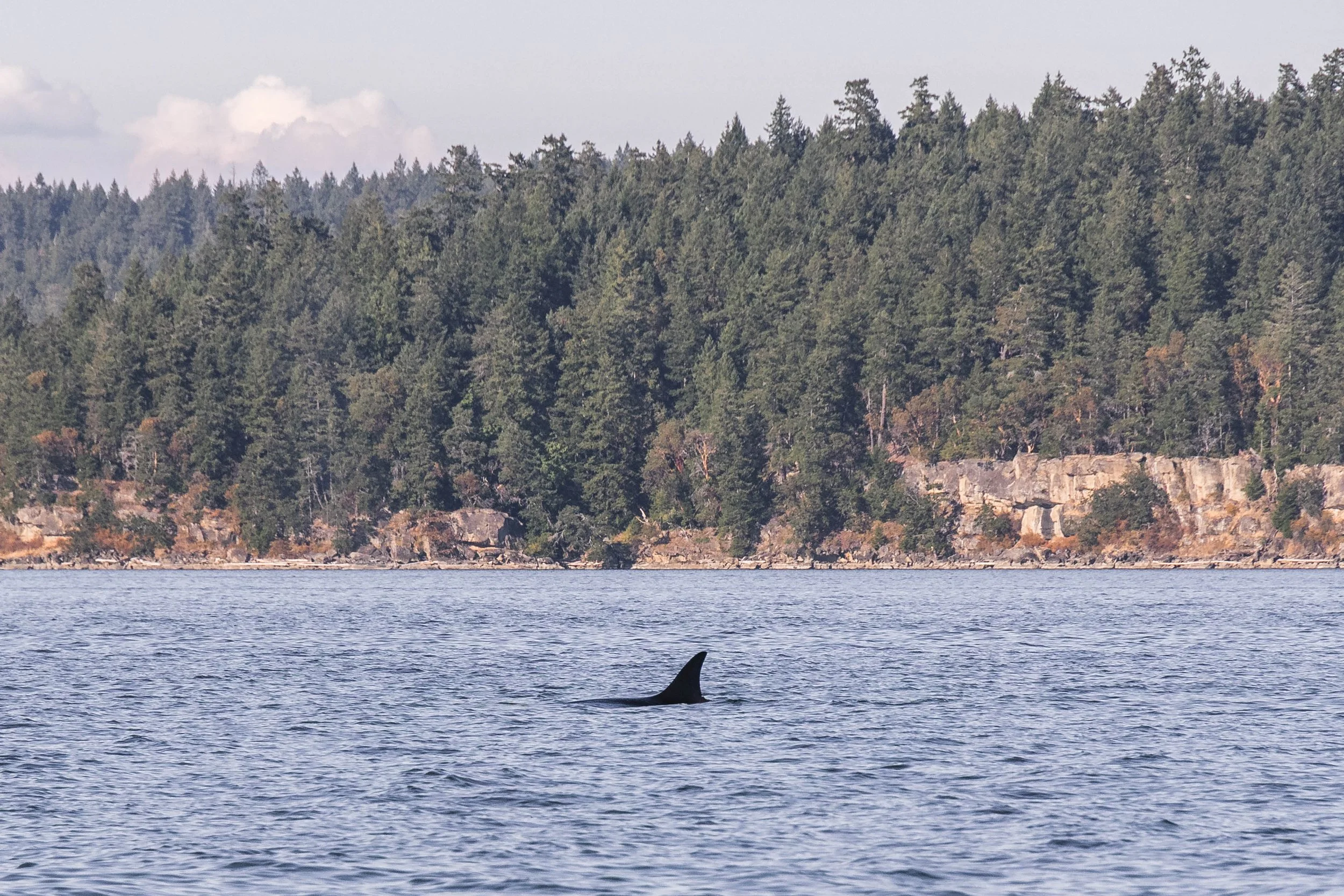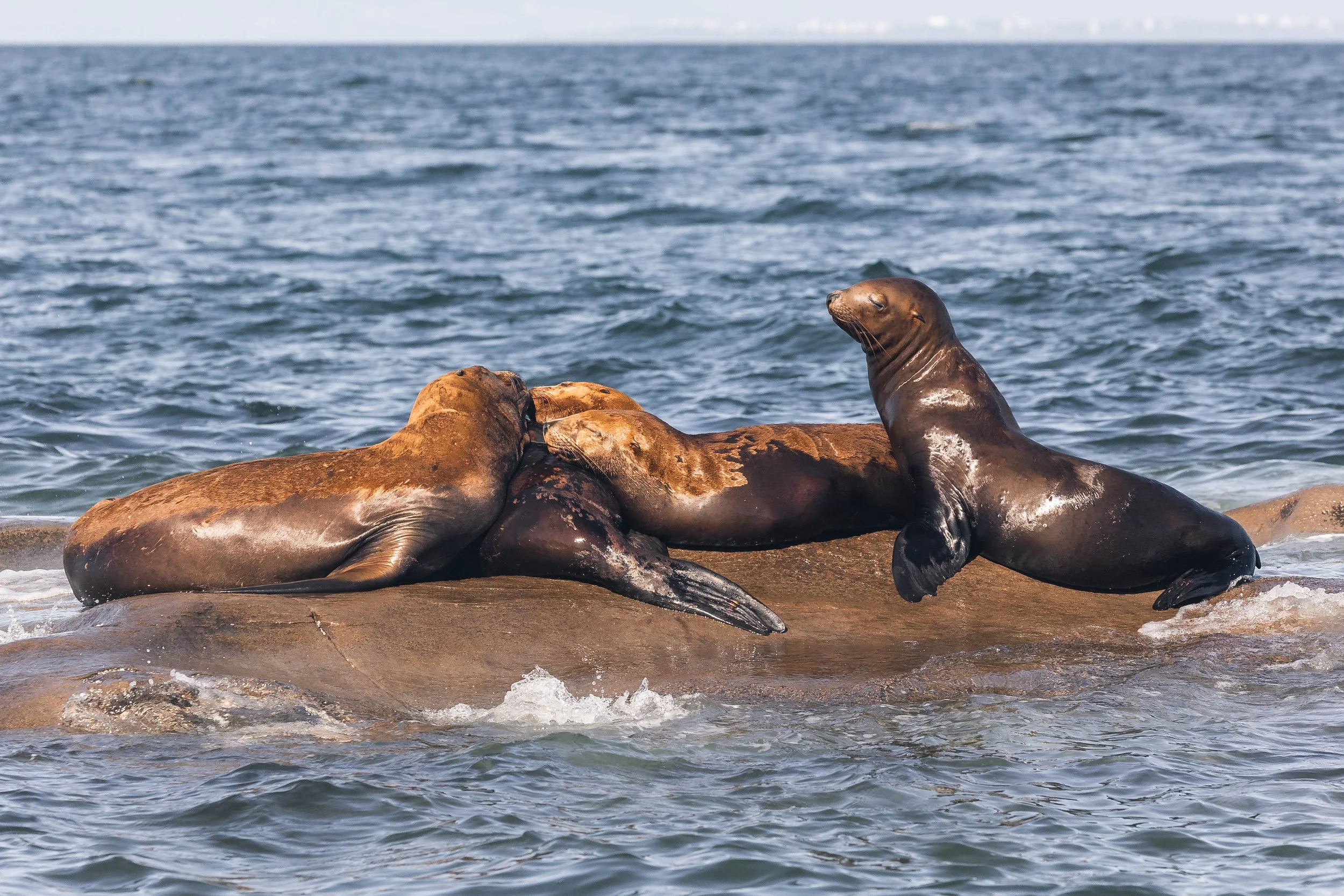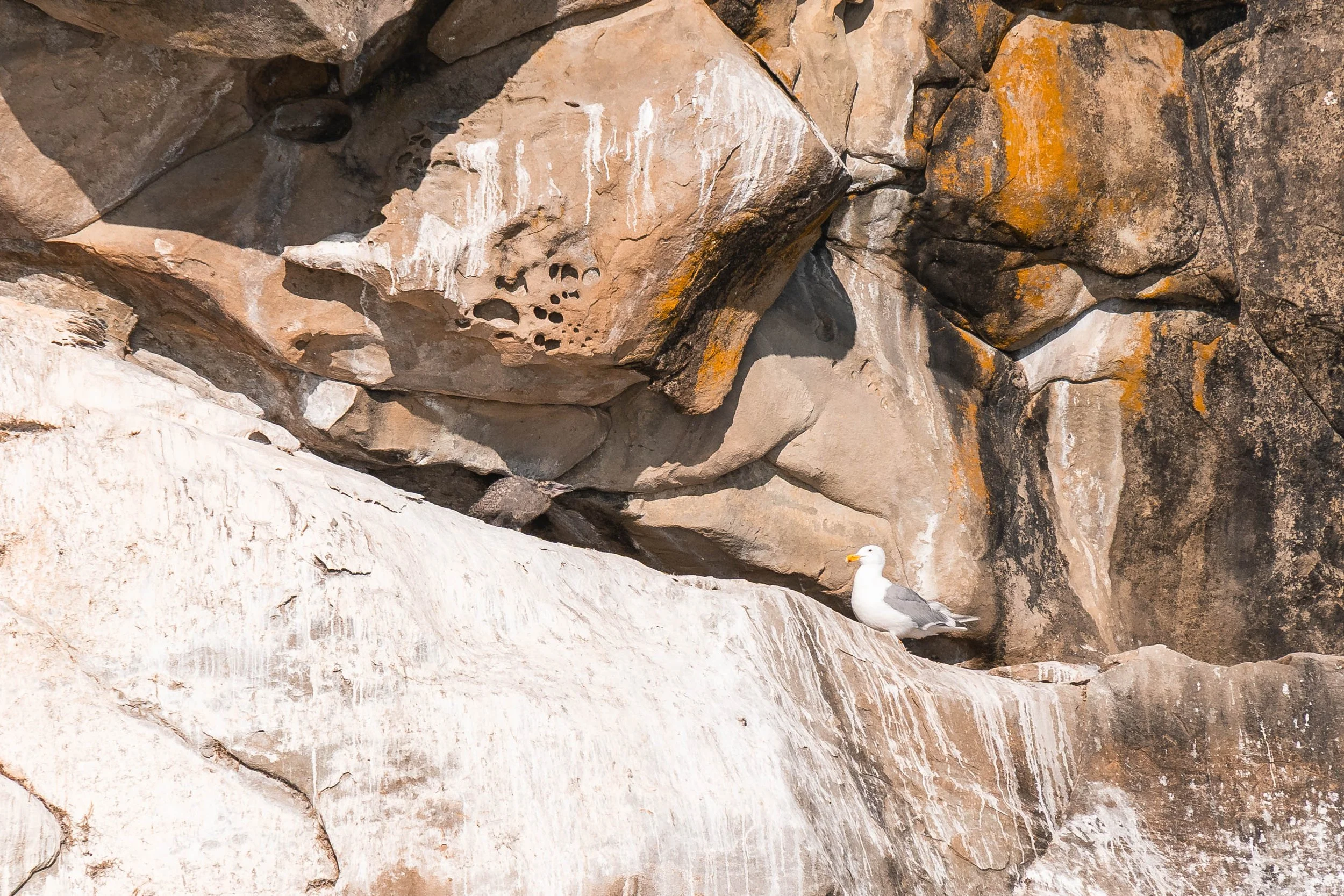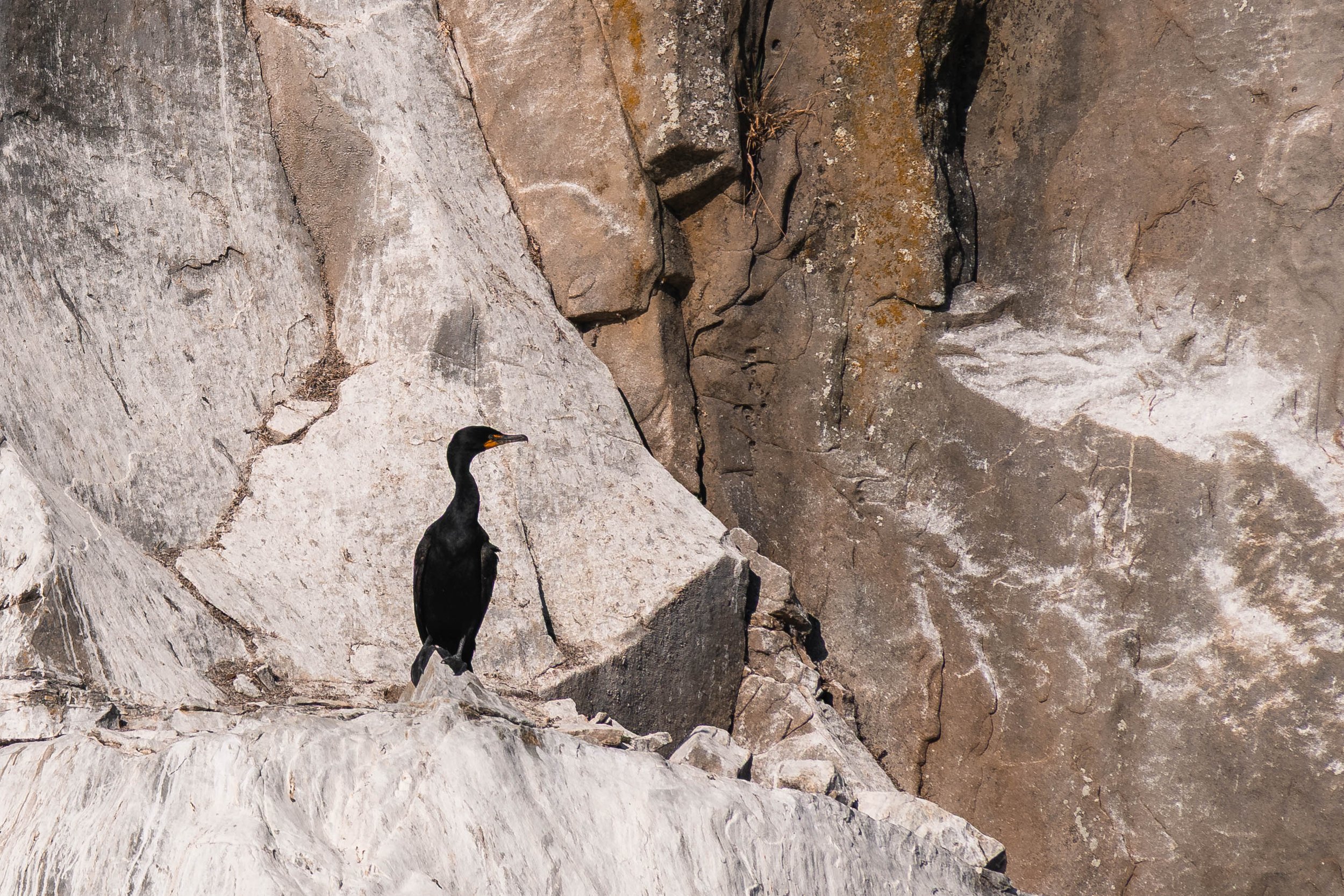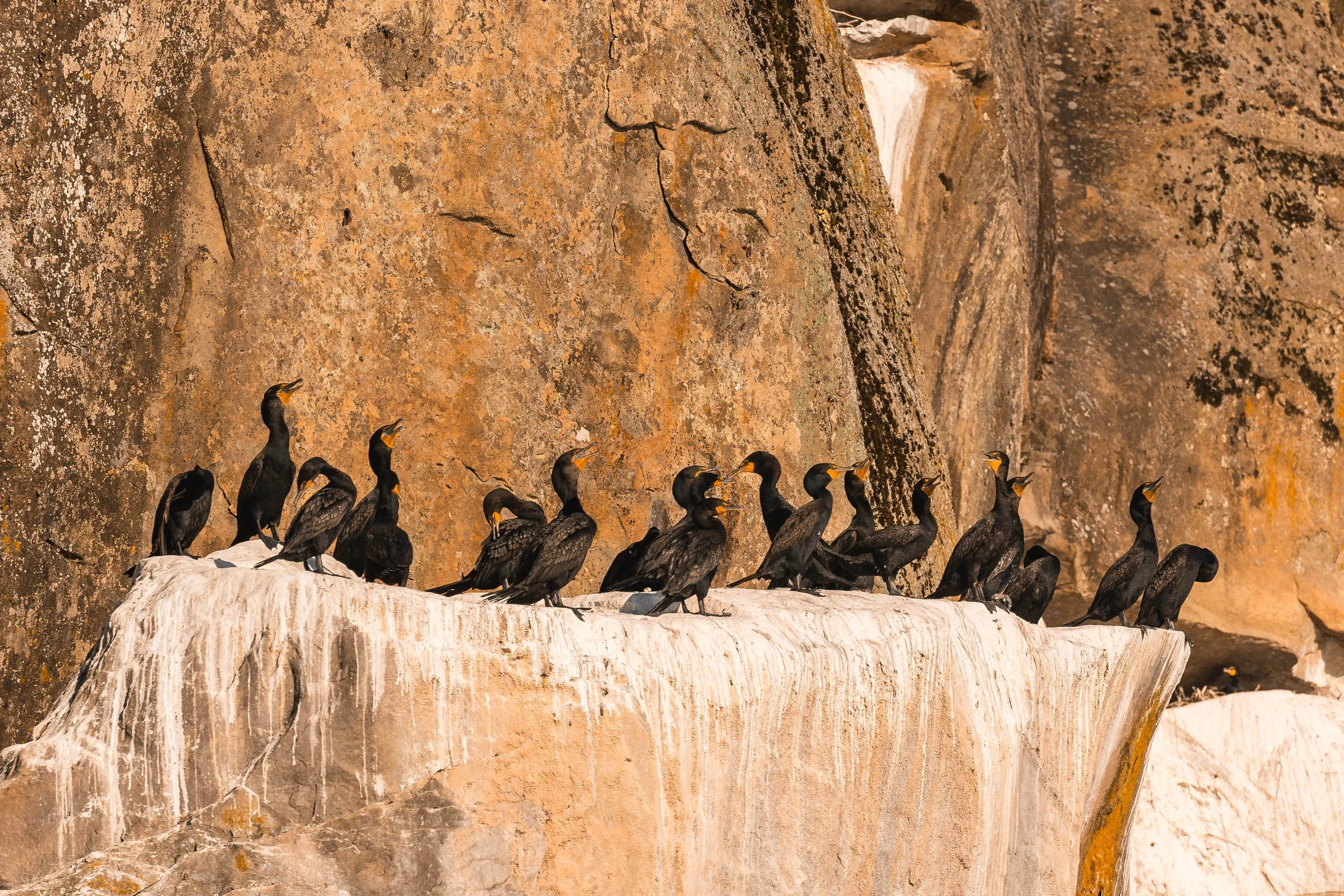August 2, 2025, 3:30 PM - Double species afternoon!
This afternoon, both Kula, our semi-covered vessel, and Keta, our open boat, left the dock under glassy-calm conditions. The Salish Sea was still, the air crisp, and within minutes of departing Nanaimo, we spotted blows rising into the air just around the corner from home, off Gabriola Island.
Our first sighting of the day was a trio of humpback whales: Smoke (BCX2183), BCZ0410 calf 2022, and Professor X (BCX1965). These whales are no strangers to our waters, and thanks to their nearly 20-foot-long tail flukes, we were able to identify them as individuals.
Every humpback’s tail, or fluke, is unique, a fingerprint of the sea. The underside of the fluke displays distinctive patterns of black and white pigmentation, as well as nicks, scars, and barnacle marks, all of which remain consistent throughout the whale’s life. By photographing these patterns, researchers can match whales to catalogues, allowing us to track their life histories, travels, and associations year after year.
Smoke, born in 2020 to a whale named Flame, migrated here from the warm breeding grounds of Hawaii. With them today was BCZ0410 calf 2022, born to Anvil in 2022, who also hails from Hawaii. The third member of the group, Professor X, is a female first recorded in 2019, who makes the same epic migration.
The journey from Hawaii is no small feat. Humpbacks travel roughly 4,000 kilometres between their winter breeding grounds and our nutrient-rich summer feeding areas. While in Hawaii, they don’t feed at all; the warm, clear waters are perfect for giving birth and raising young calves, but they lack the dense swarms of krill and schooling fish humpbacks need to sustain themselves. Instead, these whales rely on thick blubber reserves built up during the summer and fall here in the North Pacific. By the time they return to our coast each spring, they are hungry and ready to take advantage of the feast offered by the Salish Sea.
After a magical encounter with the humpbacks, we turned our bows toward the Gulf Islands and began searching for other wildlife. Our efforts paid off in Stuart Channel, where the striking black dorsal fins of transient (Bigg’s) orca cut through the water; it was the T065B family, consisting of:
T065B Chunk ♀ (1993)
T065B1 Birdsall ♂ (2011)
T065B2 Nettle ♂ (2019)
T065B3 Rook ♂ (2023)
Unlike humpbacks, transient orca are not migratory, but they do have an impressive range stretching from Alaska down to California. They are apex predators, specializing in hunting marine mammals such as harbour seals, sea lions, and porpoises. On average, transients travel around 100 kilometres in a single day in search of food, a reminder that their lives are a constant balance of energy gained and energy spent. We can only guess that our pod was on the move today to find their next meal. After enjoying time with them, we left them to their travels.
As if whales and orca weren’t enough, the day also offered us the chance to meet two of our pinniped residents. Harbour seals, the most common marine mammal in the Salish Sea, live and breed here year-round. They often haul out on rocky shorelines, log booms, and sandy beaches to rest, warm up, and keep a watchful eye on passing predators. Steller sea lions, on the other hand, are seasonal visitors; these giants migrate north in the summer to breed in large rookeries in British Columbia and Alaska, returning to our waters in the fall and winter to feed.
Our final stop of the day brought us to the dramatic cliffs of Gabriola Bluffs, where nesting cormorants clung to ledges, their dark forms silhouetted against the sky. These skilled fishers are doting parents at this time of year, taking turns guarding their nests and diving for food in the surrounding waters.
With the sun dipping toward the horizon, we turned for home, grateful for a day that gave us everything from the long-distance travellers of the Pacific to the year-round residents of our local waters.
Enjoy the photos below taken by Marine Naturalists Hayleigh Hilbert and Jordan Robinson.
Smoke’s dorsal fin. Photo by Hayleigh Hilbert.
BCZ0410 calf 2022’s dorsal fin. Photo by Hayleigh Hilbert.
A fluke from BCZ0410 calf 2022. Photo by Jordan Robinson.
BCZ0410 calf 2022 diving with Professor X in tow. Photo by Jordan Robinson.
Can you spot both humpbacks in this photo? Photo by Hayleigh Hilbert.
Professor X making waves. Photo by Hayleigh Hilbert.
Professor X’s dorsal fin. Photo by Hayleigh Hilbert.
A fluke waterfall. Photo by Hayleigh Hilbert.
Smoke fluking. Photo by Hayleigh Hilbert.
A great look at Smoke’s dorsal fin. Photo by Jordan Robinson.
Birdsall followed by Chunk as Nettle surfaces beside. Photo by Hayleigh Hilbert.
Birdsall followed by Chunk and Rook. Photo by Hayleigh Hilbert.
Chunk in front with Birdsall behind her and Rook in tow. Photo by Hayleigh Hilbert.
A good look at the scars on Birdsall’s saddle patch. Photo by Hayleigh Hilbert.
Chunk following Birdsall. Photo by Hayleigh Hilbert.
Nettle arching for a dive. Photo by Hayleigh Hilbert.
Nettle and Rook surfacing side by side. Photo by Hayleigh Hilbert.
Birdsall surfacing. Photo by Jordan Robinson.
Chunk, Birdsall, Nettle and Rook surfacing for a family photo. Photo by Jordan Robinson.
Another family pic! Photo by Hayleigh Hilbert.
Rook showing off his eye patch. Photo by Hayleigh Hilbert.
Our matriarch Chunk crusing the Salish Sea. Photo by Jordan Robinson.
Birdsall surfacing in the calm water. Photo by Hayleigh Hilbert.
Keta watching the whales. Photo by Jordan Robinson.
Steller’s fighting over the best spots, as usual. Photo by Jordan Robinson.
Steller Sea Lions sunning on the rocks. Photo by Hayleigh Hilbert.
A couple plump harbour seals. Photo by Hayleigh Hilbert.
Fuzzy harbour seals snoozing. Photo by Hayleigh Hilbert.
A gull with their chick. Photo by Jordan Robinson.
A cormorant at the Gabriola Bluffs. Photo by Jordan Robinson.
Lined up in the sun! Photo by Hayleigh Hilbert.
Cormorants in their nest. Photo by Hayleigh Hilbert.

